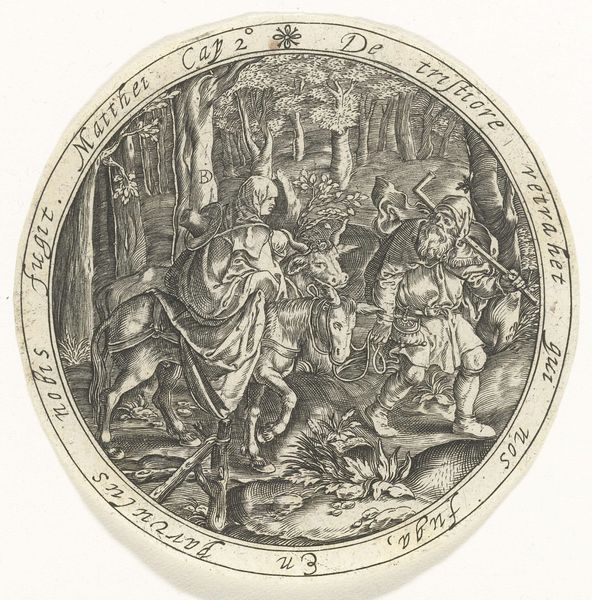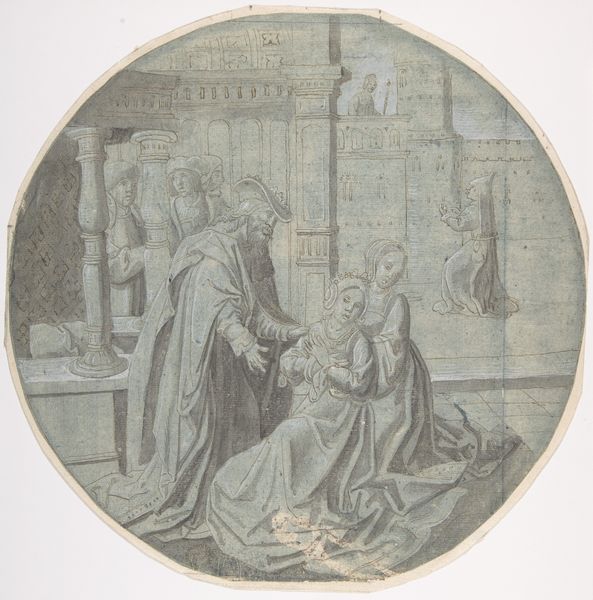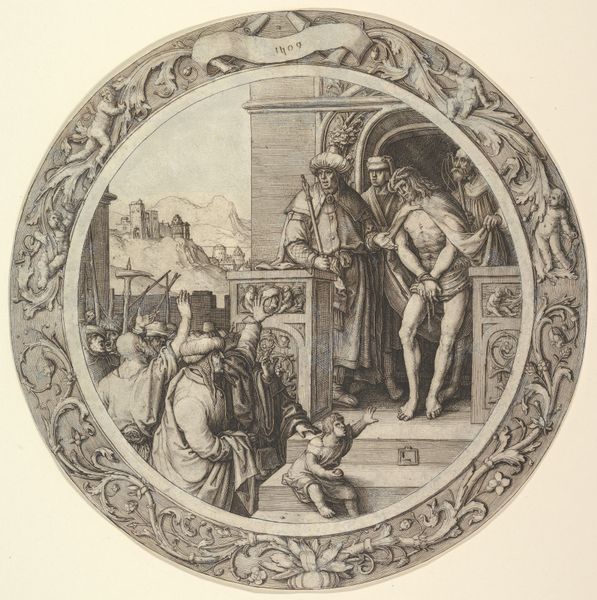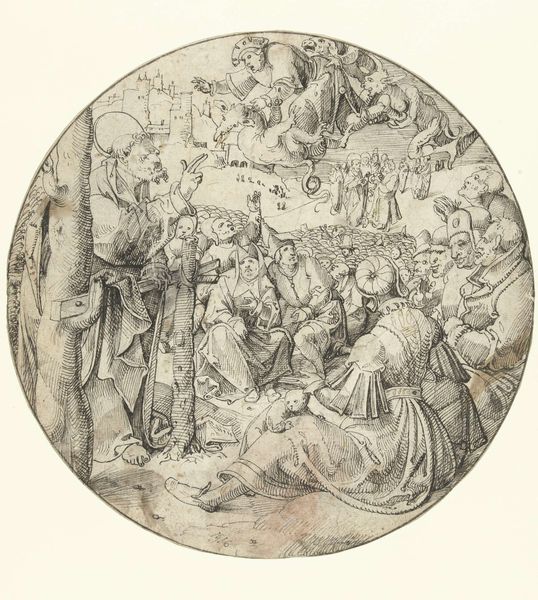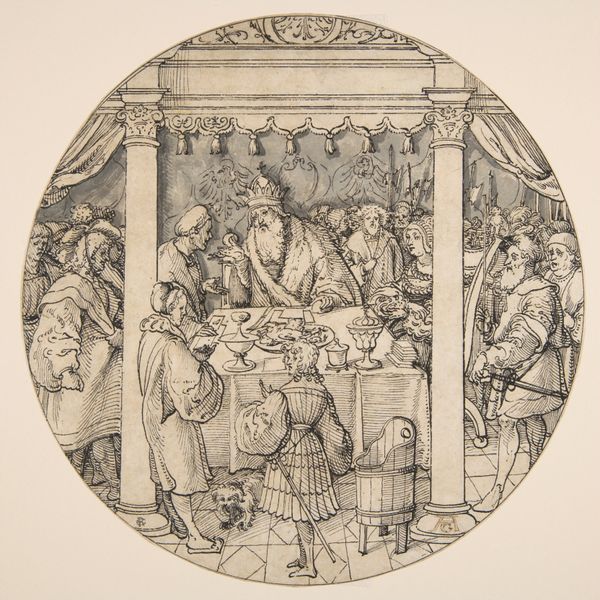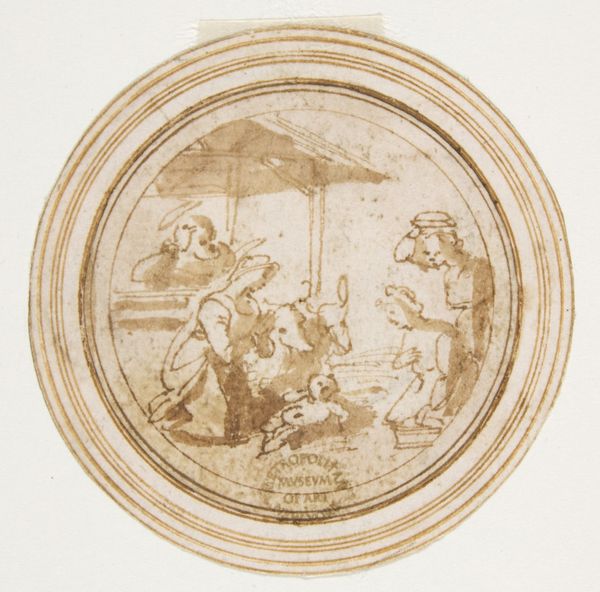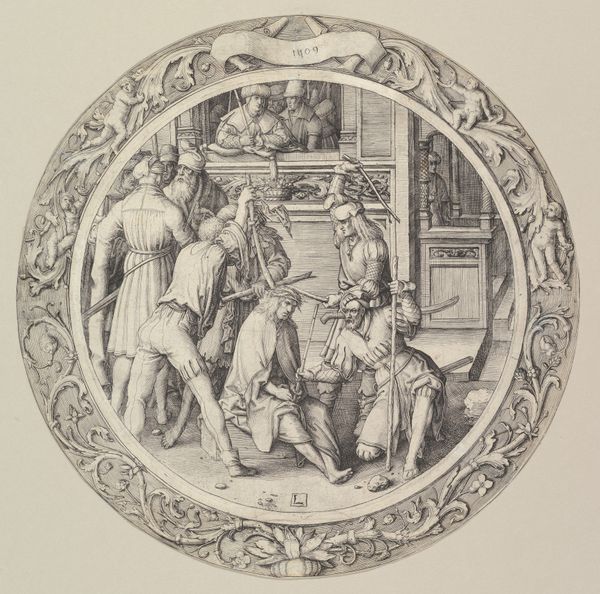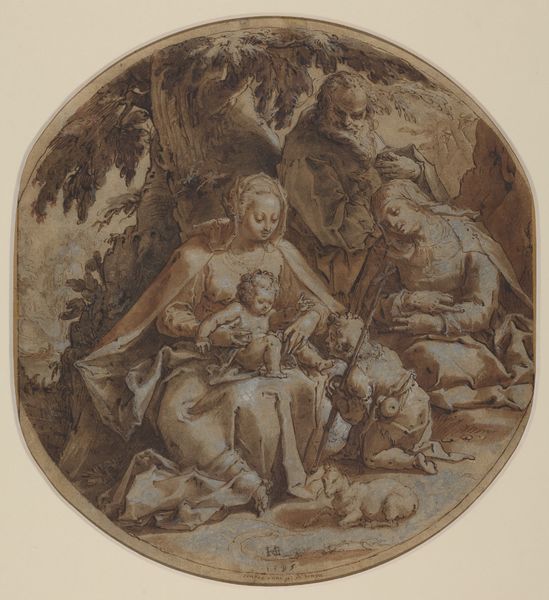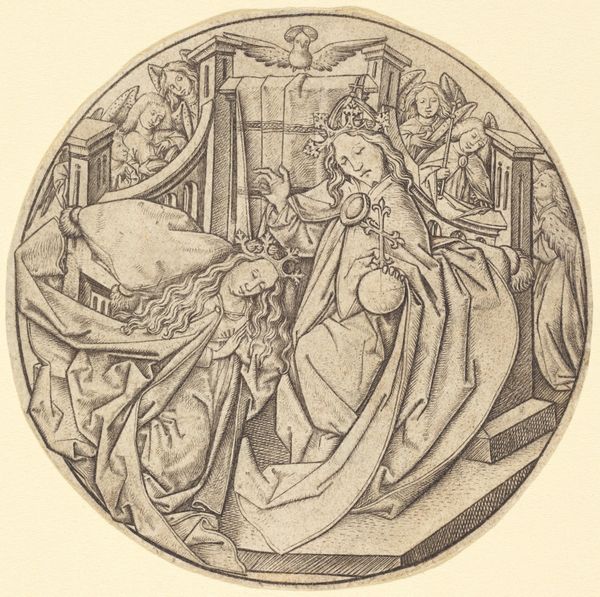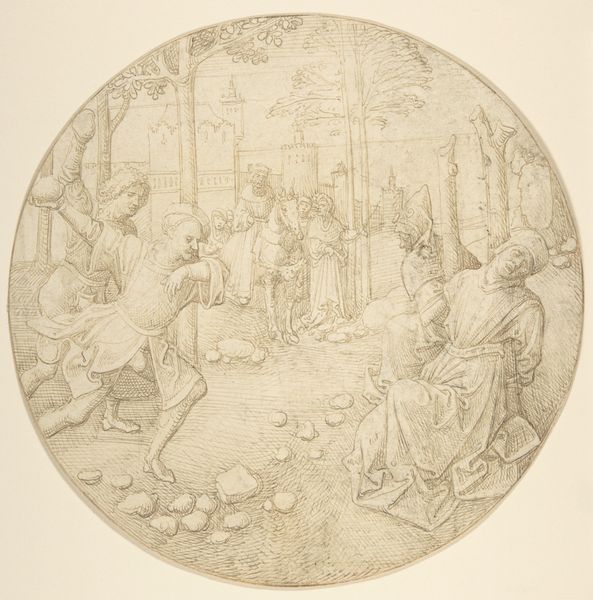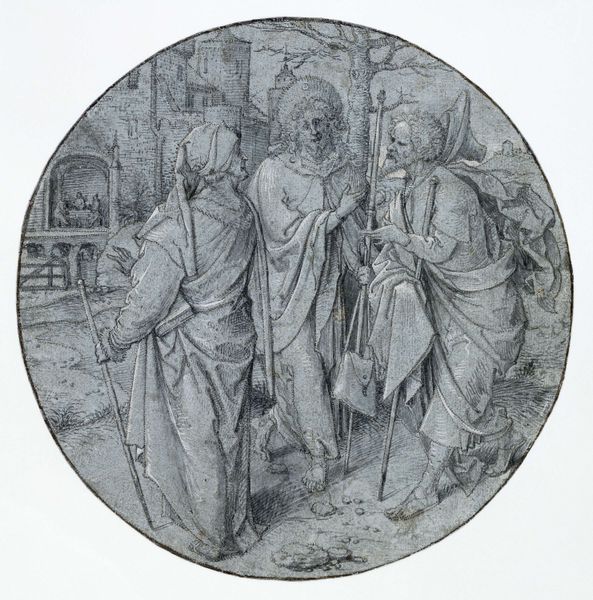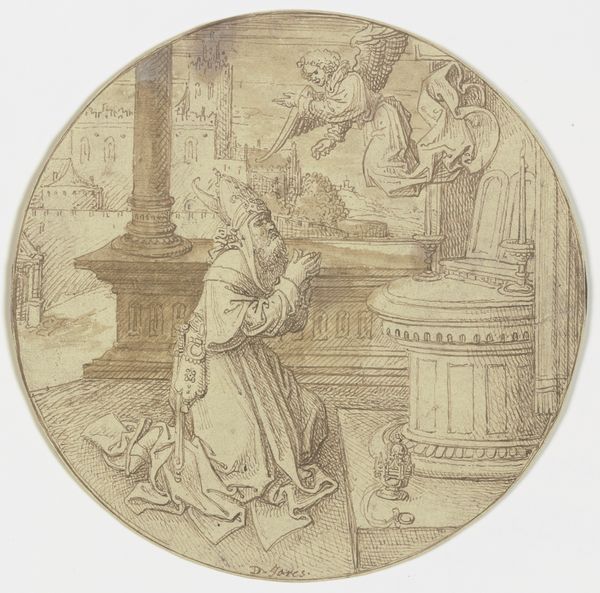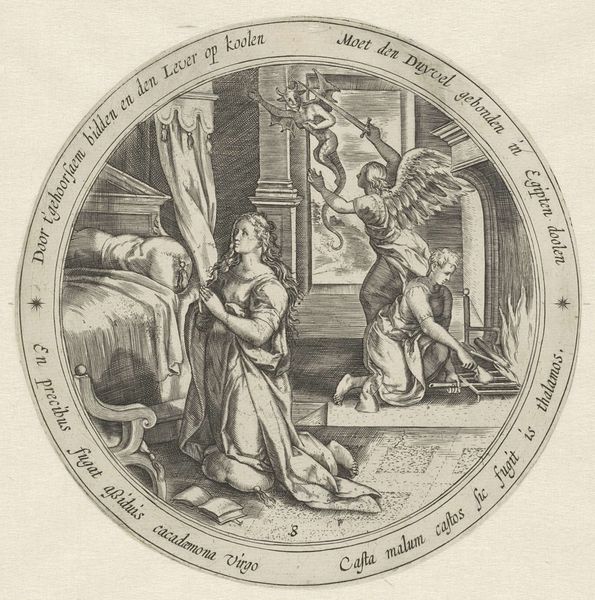
drawing, paper, ink, pencil, pen
#
drawing
#
narrative-art
#
charcoal drawing
#
figuration
#
paper
#
ink
#
pencil drawing
#
pencil
#
pen
#
history-painting
#
northern-renaissance
Copyright: Rijks Museum: Open Domain
Curator: Welcome. Today we’re looking at a drawing housed here at the Rijksmuseum: "The Adoration of the Shepherds." It's attributed to Pieter de Jode I and is believed to have been created sometime between 1580 and 1634. The artwork uses pen, pencil, ink, and charcoal on paper. Editor: Immediately, I’m struck by the intimacy it conveys. The soft lines, the circular composition...it feels like peering into a private, almost sacred moment. The light seems to emanate from the baby Jesus. Curator: Indeed. This piece reflects a growing humanist interpretation of religious stories during the Northern Renaissance. The choice of drawing as a medium, compared to painting, lends itself to that intimacy, a sense of immediacy and personal devotion. The careful detail of the figures creates a captivating story. Editor: I also see how it echoes broader artistic trends – this almost idealized representation of poverty and faith. Is it romanticizing the realities of the time, or perhaps offering a message of hope to the less privileged through religious devotion? I wonder about its initial audience and the sociopolitical messaging at play. Curator: That's a crucial consideration. While rooted in a biblical narrative, works like this circulated amongst an elite class who could afford and appreciate them, reinforcing their religious and moral perspectives, shaping collective identities in the process. The placement of the Shepards within a developed and complex composition offers cues about its historical context. Editor: So, in a way, even scenes of humility and piety become entangled with issues of class and power? Even this apparently modest medium points to how visual narratives historically uphold power structures, offering both hope and potentially perpetuating the status quo. Curator: Precisely. It reminds us that art is rarely a neutral reflection but a carefully constructed dialogue shaped by the hands that create it, the eyes that consume it, and the societies within which it exists. Editor: I’m left pondering how this delicate drawing continues to spark such powerful conversations about faith, society, and representation centuries after its creation. Curator: A beautiful reminder that engaging with the past helps us to better navigate the complexities of our present.
Comments
No comments
Be the first to comment and join the conversation on the ultimate creative platform.

